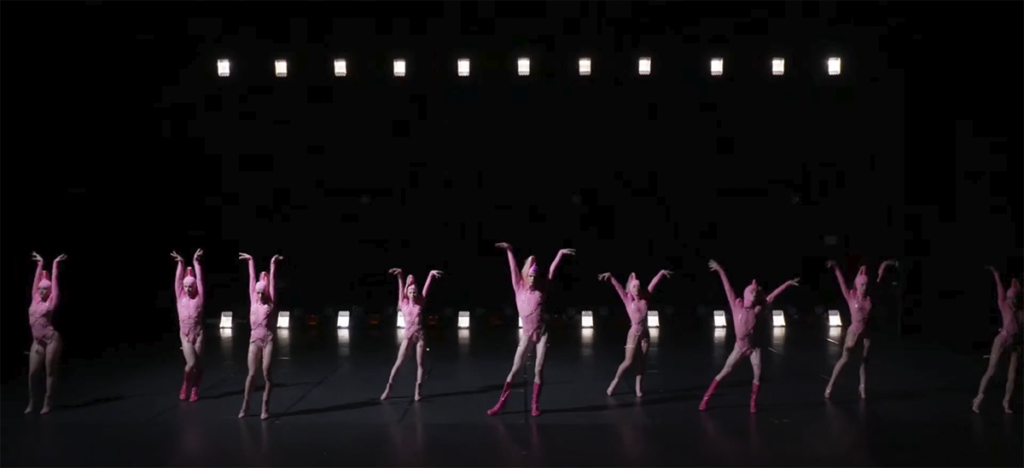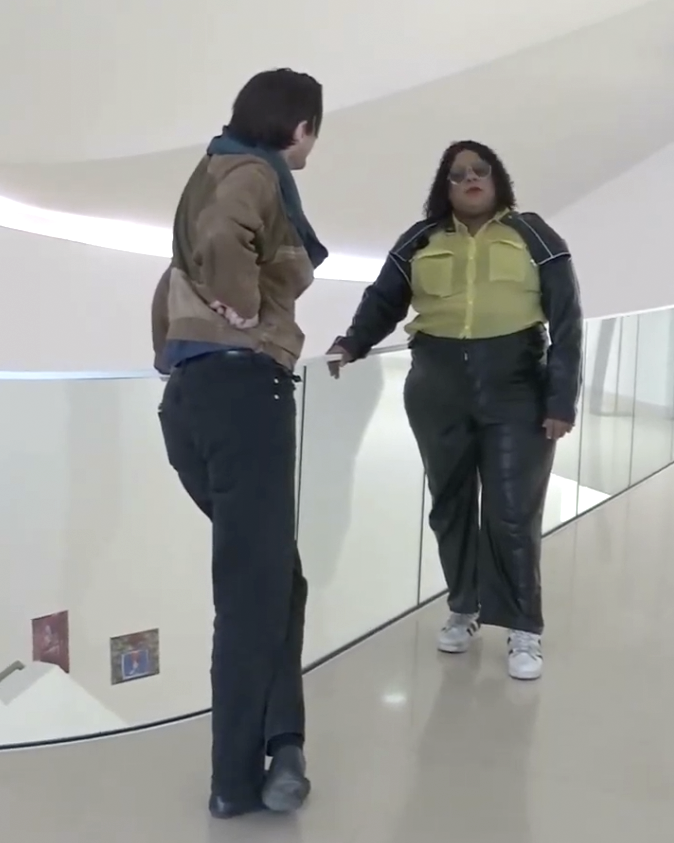
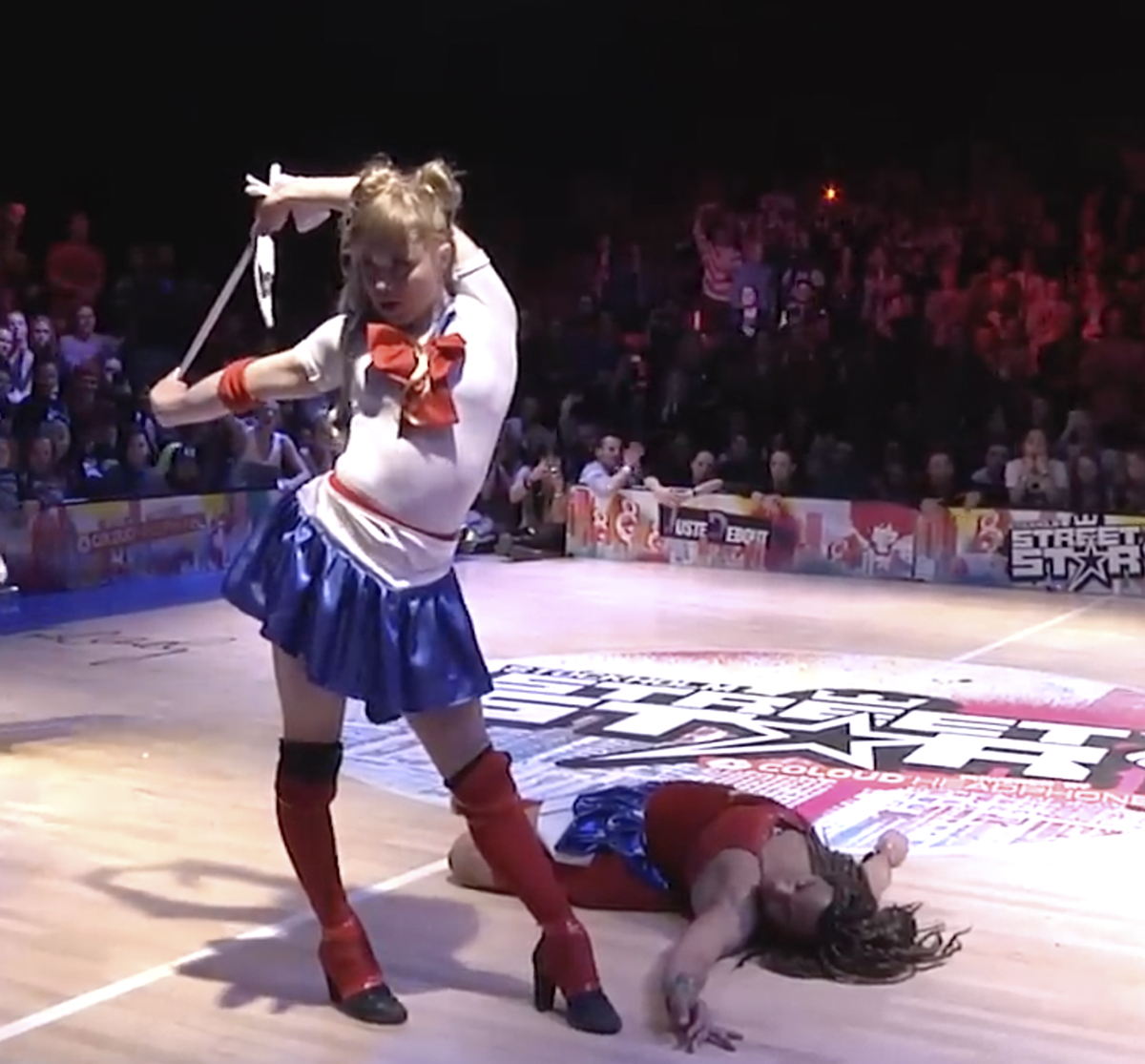


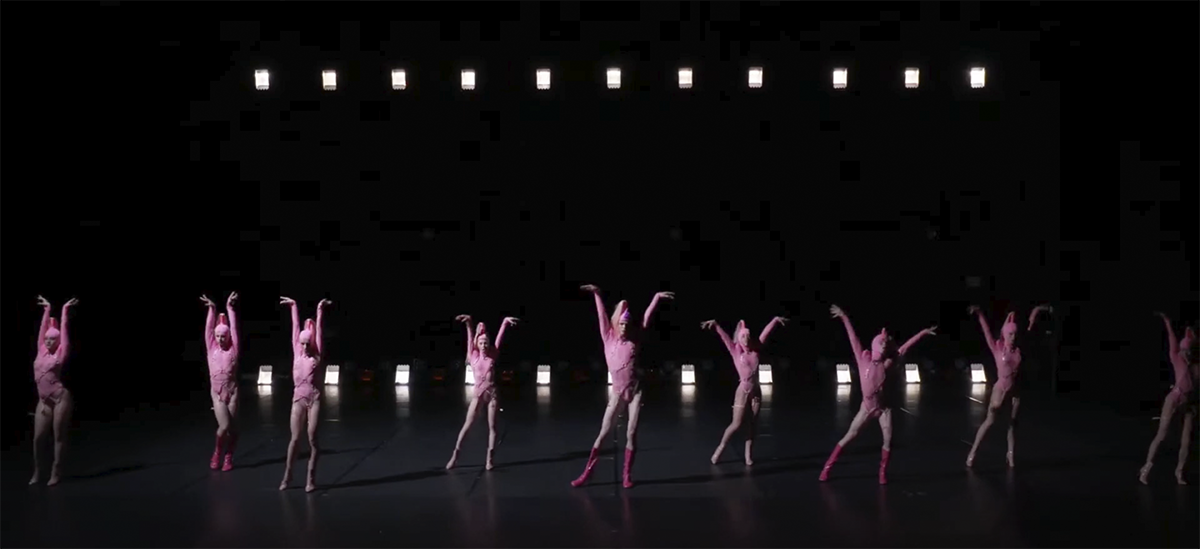
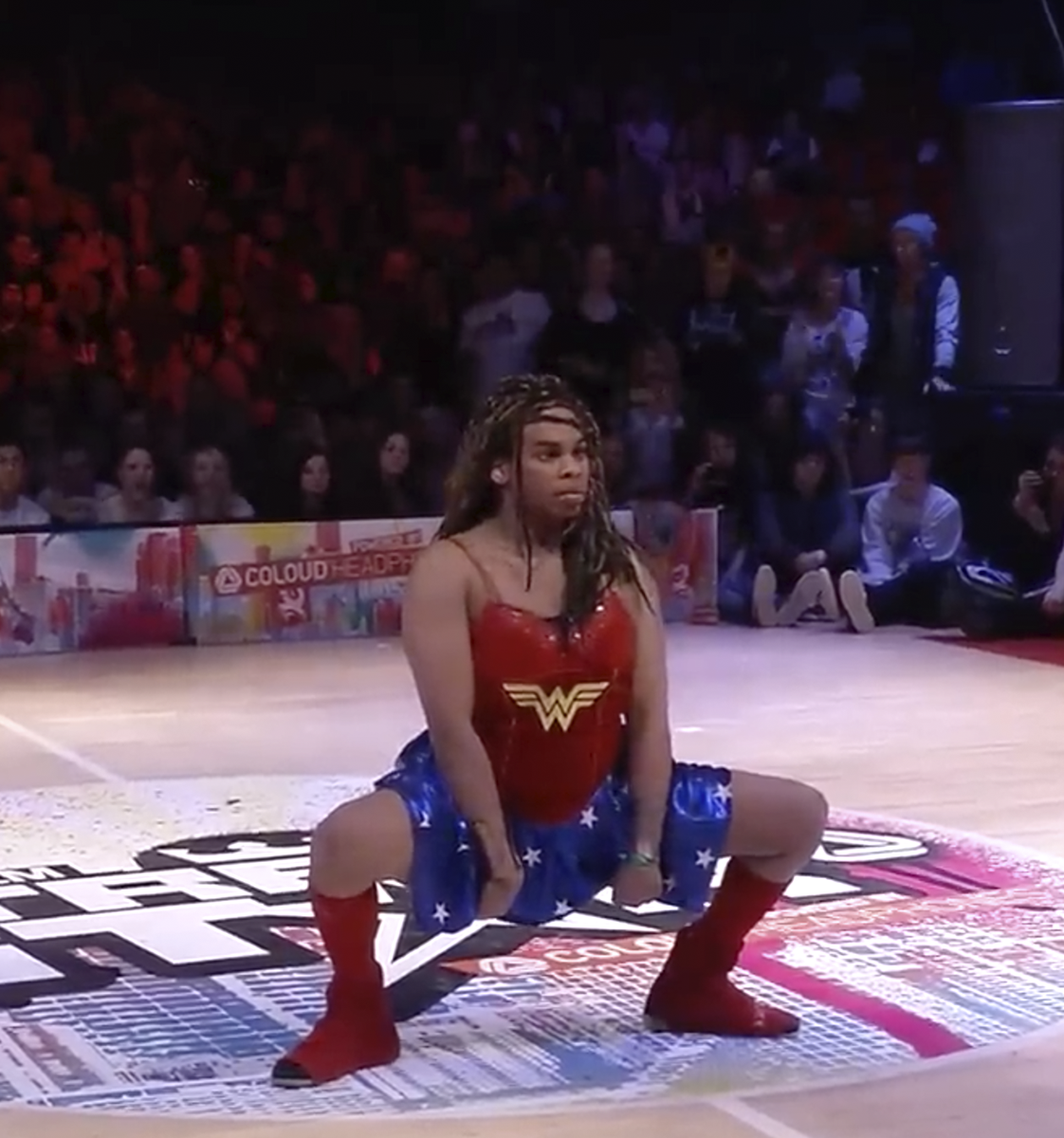
Lasseindra Xclusive Lanvin
April 2025
Lasseindra Xclusive Lanvin, a major figure of Voguing in France and internationally, is a pioneer of the European Ballroom Scene. She began her career in New York, the birthplace of Voguing — an urban dance rooted in the Black queer community and born out of a desire to resist racism and sexism. Today, she embodies values of solidarity, tolerance, and resistance against all forms of exclusion. She is notably behind the founding of the Eurasian chapter of the House of Ninja, known from its inception for its multiculturalism and influences from martial arts.
On Saturday, April 5, for Chaillot Expérience Mode #6, she will lead a public workshop-performance: a one-hour voguing ball where resistance takes the form of dance.
Mathieu Buard
To begin, I’d like to ask you to tell us a bit about where Lasseindra Nina comes from — or rather, where the House of Ninja comes from?
Lasseindra
Well, I’m no longer Ninja! It’s Lasseindra Xclusive Lanvin now. We’ve changed our name, changed our house.
Mathieu Buard
And how do you change houses? What does this new house express — in terms of movement, desire, the body?
Lasseindra
It’s a mix of personal evolution and life experience. It depends on each person, but for me, it’s part of a transition. This new house has different expectations — it’s younger, more in tune with the times, more anchored in the present.
It’s not necessarily about a new hybrid of movements, it’s more about a new way of thinking. A different philosophy. At the core, the dance remains the same — but it's embodied by different people, with new energies and new approaches to transmission.
Mathieu Buard
And is that what we find in the workshops you’re offering for Chaillot Expérience — like the ones you’ve done at the Pompidou Center?
Lasseindra
The workshops I lead are, to me, like body therapy — and also therapy of the mind. It’s a way to give people back their agency.
Mathieu Buard
The right to be there. To be present.
Lasseindra
To simply be present, yes. Because the lives we lead today — they crush us. The weight of it all: politics above all, image, social pressure. We all wear masks, in one way or another.
Mathieu Buard
It’s like playing a role, but without the laugh track. We perform our own bodies.
Lasseindra
We are ourselves — and we learn to accept that. Accept who we are, what we can or cannot do. And that’s okay.
In these workshops, the body language we use isn’t really suited for young children. I prefer to work with teenagers, from 15 and up. That way, we can go deeper, without self-censorship. I’m not into censorship. It’s not even about sensuality or sexuality — it’s more about language, about life experience. Some things can only be expressed from a certain age onward.
Mathieu Buard
So what’s the starting point in a workshop, concretely?
Lasseindra
There’s always a warm-up, of course. But in truth, everything starts with the music. Music is the beginning of it all.
Mathieu Buard
The heart of the workshop.
Lasseindra
The heart of everything. Music carries the mind, guides it. It sets the direction.
The sound is still house music, but a specific kind — ballroom house. During the workshops, you might also hear R’n’B, some contemporary tracks… But the sound world stays close to deep house and ballroom.
Mathieu Buard
And you mentioned there will be a ball at Chaillot this year?
Lasseindra
Yes, this year. It’s going to be a ball that reflects what’s happening right now. I don’t have a title yet, so I won’t reveal it, but it’s rooted in current political concerns. We’re facing struggles, the rollback of rights — especially for LGBT communities, Black communities, and others. Rights that were so hard-won are being swept away with a flick of the hand. It shows just how fragile everything is. And in that context, we need spaces where we can breathe, play, let go — even if just for a moment. We need refuge.
Mathieu Buard
And that’s also something you try to recreate in your workshops.
Lasseindra
Yes, but in the workshops, we begin by giving people tools — symbolic weapons — to defend themselves in society. But that doesn’t mean we always need to be in fight mode.
Mathieu Buard
And how do you approach style — clothing, costume, fashion — in the workshops or in performance?
Lasseindra
I don’t address it directly, but I always say that clothing matters. It’s not about following trends — it’s about fashion sense, elegance. In Paris, we’re supposed to know how to dress. It’s cultural. And style can help you feel elevated. That can come through clothes, makeup, a lot of things.
Mathieu Buard
And in your performances, that plays a role too, right? Especially since you carry “Lanvin” in your name.
Lasseindra
Of course. Lanvin is one of the first French couture houses, founded by a woman. Its logo evokes a maternal figure — there’s that sense of care, of being held together.
Mathieu Buard
And do we see a “Lanvin” style on stage? Those flowing fabrics, that flattering, fluid design that moves with the body?
Lasseindra
There’s a bit of everything. We’re not boxed into one aesthetic. But yes, it flows through.
Mathieu Buard
And Chamanik, the piece you performed at Chaillot — could you tell us more about that?
Lasseindra
Chamanik is a ritual. I’m from South America, so there’s a deep connection to those traditions. The performance brings together various ancestral spiritualities: indigenous shamanism, but also candomblé, santería, voodoo. This blend is very present in South America, especially in Brazil — a mix of African and native cultures. The piece is a cleansing ritual — to purify the audience’s soul, their spirit.
Mathieu Buard
There’s a real sense of offering, in what you’re saying.
Lasseindra
Yes. We offer a service. That’s our role. It’s a very specific kind of ritual — meant to purify the space. We all carry pain, invisible wounds. We need to release them.
Mathieu Buard
And the audience is invited to see what the shaman sees.
Lasseindra
Exactly — there’s a reversal. The audience sees what the shaman sees when they call on the spirits.
Mathieu Buard
How many of you are on stage?
Lasseindra
There are five dancers, including a real priestess trained in candomblé. We also pay tribute to Erzulie — one of the voodoo patron saints, who’s often associated with the LGBT community.
 Mathieu Buard
Mathieu Buard
To begin, I’d like to ask you to tell us a bit about where Lasseindra Nina comes from — or rather, where the House of Ninja comes from?
Lasseindra
Well, I’m no longer Ninja! It’s Lasseindra Xclusive Lanvin now. We’ve changed our name, changed our house.
Mathieu Buard
And how do you change houses? What does this new house express — in terms of movement, desire, the body?
Lasseindra
It’s a mix of personal evolution and life experience. It depends on each person, but for me, it’s part of a transition. This new house has different expectations — it’s younger, more in tune with the times, more anchored in the present.
It’s not necessarily about a new hybrid of movements, it’s more about a new way of thinking. A different philosophy. At the core, the dance remains the same — but it's embodied by different people, with new energies and new approaches to transmission.
Mathieu Buard
And is that what we find in the workshops you’re offering for Chaillot Expérience — like the ones you’ve done at the Pompidou Center?
Lasseindra
The workshops I lead are, to me, like body therapy — and also therapy of the mind. It’s a way to give people back their agency.
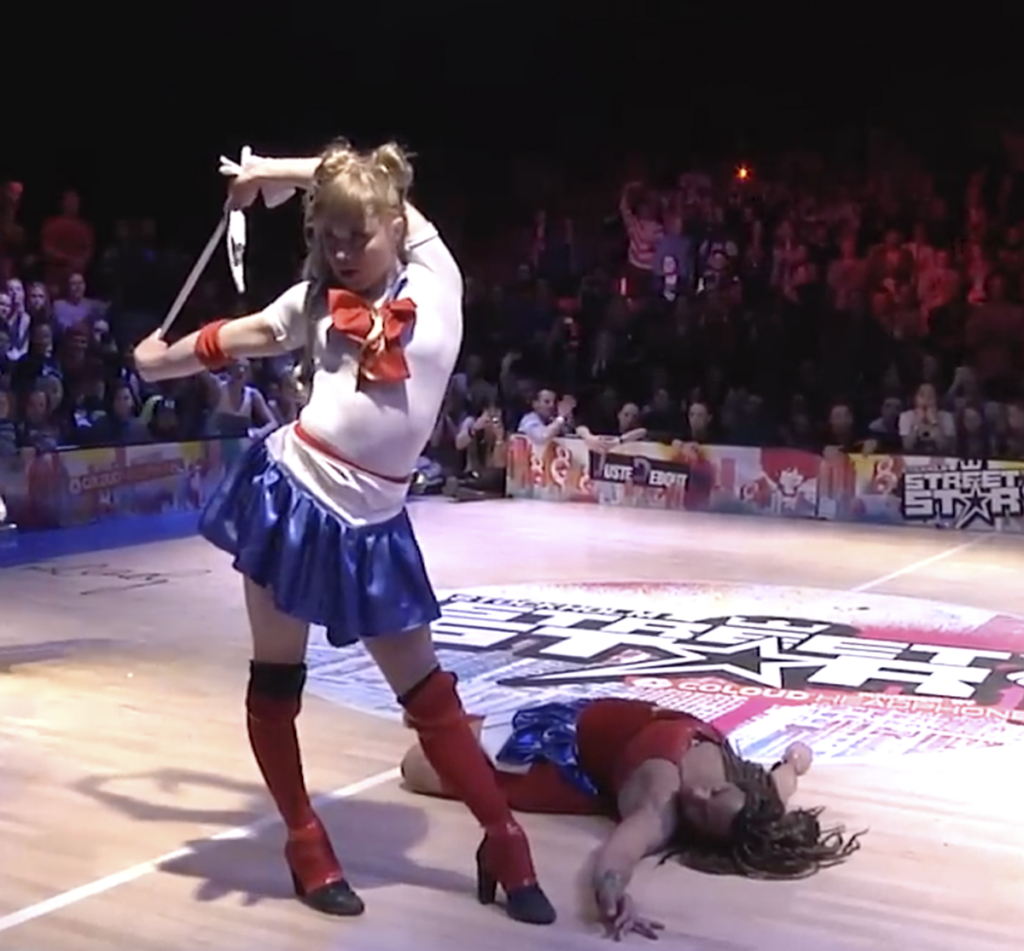
Mathieu Buard
The right to be there. To be present.
Lasseindra
To simply be present, yes. Because the lives we lead today — they crush us. The weight of it all: politics above all, image, social pressure. We all wear masks, in one way or another.
Mathieu Buard
It’s like playing a role, but without the laugh track. We perform our own bodies.
Lasseindra
We are ourselves — and we learn to accept that. Accept who we are, what we can or cannot do. And that’s okay.
In these workshops, the body language we use isn’t really suited for young children. I prefer to work with teenagers, from 15 and up. That way, we can go deeper, without self-censorship. I’m not into censorship. It’s not even about sensuality or sexuality — it’s more about language, about life experience. Some things can only be expressed from a certain age onward.
Mathieu Buard
So what’s the starting point in a workshop, concretely?
Lasseindra
There’s always a warm-up, of course. But in truth, everything starts with the music. Music is the beginning of it all.
Mathieu Buard
The heart of the workshop.
Lasseindra
The heart of everything. Music carries the mind, guides it. It sets the direction.
The sound is still house music, but a specific kind — ballroom house. During the workshops, you might also hear R’n’B, some contemporary tracks… But the sound world stays close to deep house and ballroom.
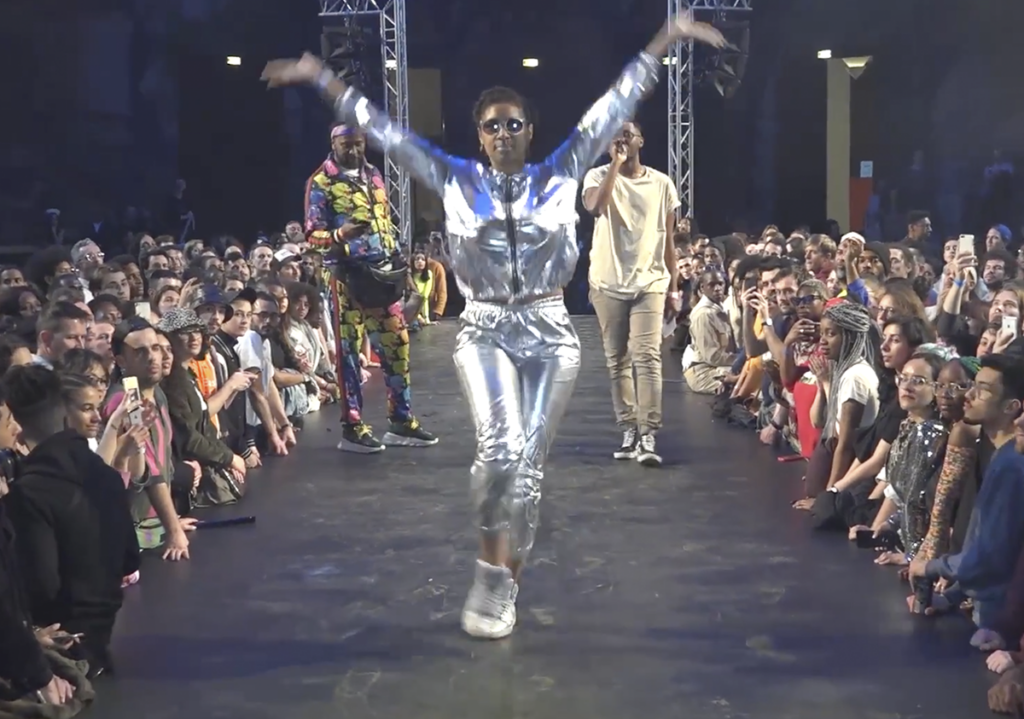 Mathieu Buard
Mathieu Buard
And you mentioned there will be a ball at Chaillot this year?
Lasseindra
Yes, this year. It’s going to be a ball that reflects what’s happening right now. I don’t have a title yet, so I won’t reveal it, but it’s rooted in current political concerns. We’re facing struggles, the rollback of rights — especially for LGBT communities, Black communities, and others. Rights that were so hard-won are being swept away with a flick of the hand. It shows just how fragile everything is. And in that context, we need spaces where we can breathe, play, let go — even if just for a moment. We need refuge.
Mathieu Buard
And that’s also something you try to recreate in your workshops.
Lasseindra
Yes, but in the workshops, we begin by giving people tools — symbolic weapons — to defend themselves in society. But that doesn’t mean we always need to be in fight mode.
Mathieu Buard
And how do you approach style — clothing, costume, fashion — in the workshops or in performance?
Lasseindra
I don’t address it directly, but I always say that clothing matters. It’s not about following trends — it’s about fashion sense, elegance. In Paris, we’re supposed to know how to dress. It’s cultural. And style can help you feel elevated. That can come through clothes, makeup, a lot of things.
Mathieu Buard
And in your performances, that plays a role too, right? Especially since you carry “Lanvin” in your name.
Lasseindra
Of course. Lanvin is one of the first French couture houses, founded by a woman. Its logo evokes a maternal figure — there’s that sense of care, of being held together.
Mathieu Buard
And do we see a “Lanvin” style on stage? Those flowing fabrics, that flattering, fluid design that moves with the body?
Lasseindra
There’s a bit of everything. We’re not boxed into one aesthetic. But yes, it flows through.
Mathieu Buard
And Chamanik, the piece you performed at Chaillot — could you tell us more about that?
Lasseindra
Chamanik is a ritual. I’m from South America, so there’s a deep connection to those traditions. The performance brings together various ancestral spiritualities: indigenous shamanism, but also candomblé, santería, voodoo. This blend is very present in South America, especially in Brazil — a mix of African and native cultures. The piece is a cleansing ritual — to purify the audience’s soul, their spirit.
Mathieu Buard
There’s a real sense of offering, in what you’re saying.
Lasseindra
Yes. We offer a service. That’s our role. It’s a very specific kind of ritual — meant to purify the space. We all carry pain, invisible wounds. We need to release them.
Mathieu Buard
And the audience is invited to see what the shaman sees.
Lasseindra
Exactly — there’s a reversal. The audience sees what the shaman sees when they call on the spirits.
Mathieu Buard
How many of you are on stage?
Lasseindra
There are five dancers, including a real priestess trained in candomblé. We also pay tribute to Erzulie — one of the voodoo patron saints, who’s often associated with the LGBT community.
